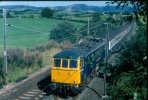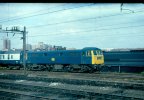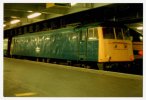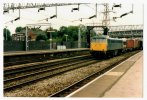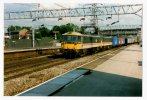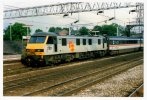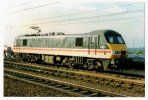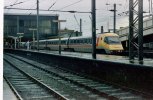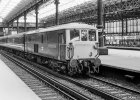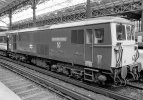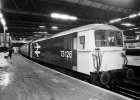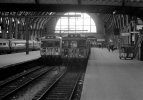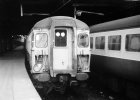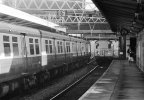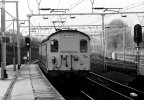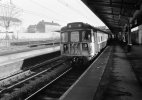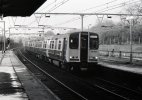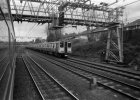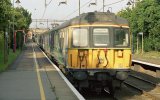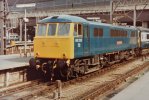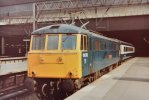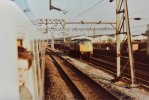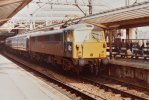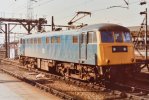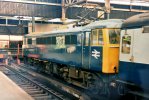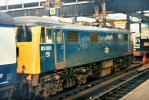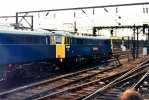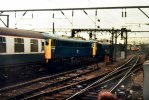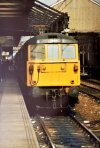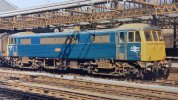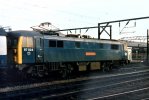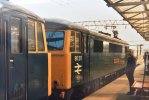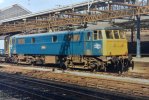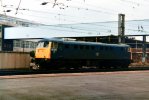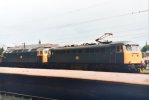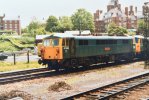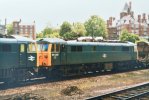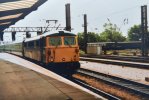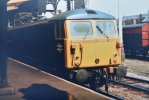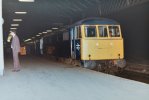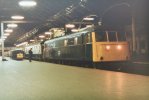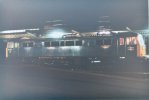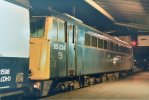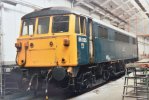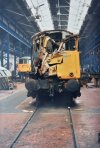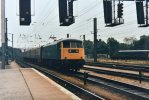Mick,
The APT power car brake was a Hydrokinetic brake mounted on the end of the motor shaft. The HK brakes on the ATP gave fabulous stopping performance. I was told that the drivers loved them. As their design - like any other dynamic retarder - relied on the speed difference between the rotor and stator to give torque, if the wheels started to lock up the torque was instantly reduced - a self sustaining wheel slide protection system. The downside was that braking effort reduced off as speed fell to zero (much like a electric dynamic brake before a solution was found). There were two significant problems with the HK brake. They were cast from an aluminium alloy which was prone to cavitation damage. Aluminium was used for weight saving as the brake was contained within the axle on the trailer cars. The major problem, which really killed the design, was ensuring the integrity of the axle which contained two rings of bolts to hold everything together. Once these started to fail there was an obvious safety hazard. Braking to rest was provided by tread brakes on the trailer cars. I cannot remember if the power cars had tread brakes (possible for wheel conditioning reasons) or if there was a small disc brake on the motor shaft.
A problem with putting a disc brake on a motor shaft is that the rotational speed is far higher than on a wheelset. The brakes are ventilated and act as fans. Unfortunately they also act as sirens. London Transport ordered some bogies from Kawasaki (shock, horror, questions in the House etc) which had motor mounted discs. When these were tested at Derby the noise was so great that the tests were abandoned until a revised design had been produced.
BR Research (me) had a project looking to see if we could use the power car brake on trailer cars driven by a gearbox. Not really cost effective but it did give me the chance of running some test trains on the WCML at 125mph. Motive power was either an 86/1 (which had the class 87 bogies) or an 87. They were able to sustain 125 mph running well, but the train formation was rather short. Labs 15 and 21 (ex HST caterers converted to an instrumentation coach and test car) plus ex Glasgow- Edinburgh disc braked mark 2s. If you thought that the ride on a Mark 2 on the WCML at 110mph was interesting, you should try it at 125!
APT was also the first use of extruded aluminium as a material for forming bodyshells.
Dave
The APT power car brake was a Hydrokinetic brake mounted on the end of the motor shaft. The HK brakes on the ATP gave fabulous stopping performance. I was told that the drivers loved them. As their design - like any other dynamic retarder - relied on the speed difference between the rotor and stator to give torque, if the wheels started to lock up the torque was instantly reduced - a self sustaining wheel slide protection system. The downside was that braking effort reduced off as speed fell to zero (much like a electric dynamic brake before a solution was found). There were two significant problems with the HK brake. They were cast from an aluminium alloy which was prone to cavitation damage. Aluminium was used for weight saving as the brake was contained within the axle on the trailer cars. The major problem, which really killed the design, was ensuring the integrity of the axle which contained two rings of bolts to hold everything together. Once these started to fail there was an obvious safety hazard. Braking to rest was provided by tread brakes on the trailer cars. I cannot remember if the power cars had tread brakes (possible for wheel conditioning reasons) or if there was a small disc brake on the motor shaft.
A problem with putting a disc brake on a motor shaft is that the rotational speed is far higher than on a wheelset. The brakes are ventilated and act as fans. Unfortunately they also act as sirens. London Transport ordered some bogies from Kawasaki (shock, horror, questions in the House etc) which had motor mounted discs. When these were tested at Derby the noise was so great that the tests were abandoned until a revised design had been produced.
BR Research (me) had a project looking to see if we could use the power car brake on trailer cars driven by a gearbox. Not really cost effective but it did give me the chance of running some test trains on the WCML at 125mph. Motive power was either an 86/1 (which had the class 87 bogies) or an 87. They were able to sustain 125 mph running well, but the train formation was rather short. Labs 15 and 21 (ex HST caterers converted to an instrumentation coach and test car) plus ex Glasgow- Edinburgh disc braked mark 2s. If you thought that the ride on a Mark 2 on the WCML at 110mph was interesting, you should try it at 125!
APT was also the first use of extruded aluminium as a material for forming bodyshells.
Dave

